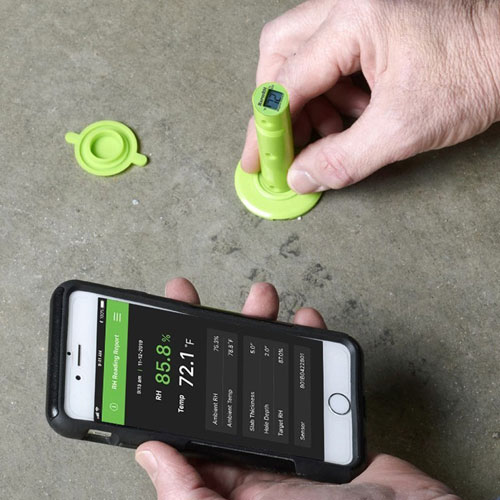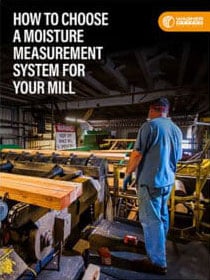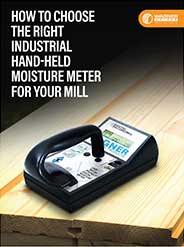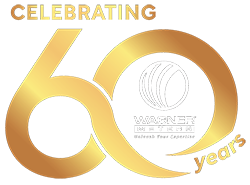Best Practices for Preventing Moisture Damage to Resilient Floors

The relative humidity test (per ASTM F2170) is one of the best options for assessing the moisture condition of concrete subfloors.
How do you ensure the success of commercial resilient floors?
Whether vinyl, linoleum, rubber, or cork, much of the floor’s success depends on how you test for and mitigate moisture.
Yes, you have to prepare the subfloor, choose the right adhesives, follow industry requirements, and have quality control measures in place.
But if you don’t take steps to prevent moisture issues, you risk flooring failures, such as warping, buckling, floor separation, or adhesives that don’t bond properly. These issues mean costly repairs and time wasted on a project that could have been finished much sooner—not ideal!
So, let’s look at some best practices for preventing these scenarios altogether.
1. Jobsite Climate Control
The jobsite should have the right climate conditions for at least 24 hours before the arrival of flooring materials.
This involves making sure the heating and ventilation system is running. Typically, you’ll want to keep the humidity levels consistent and the temperatures between 18° C and 27° C.
2. Time to Dry
The Contract Floor Association’s Guide to Contract Flooring points out that one of the main causes of moisture problems in floor coverings is not allowing “sufficient time for the construction moisture in the subfloors to dry out.”1
Don’t make that mistake.
According to the British Standard 8203:2017 Annex B, a concrete subfloor must have a relative humidity of 75% or less before it’s ready for a floor covering. How can you be sure it has reached that number? That’s where moisture testing comes in.
3. Subfloor Moisture Testing
The subfloor for many commercial resilient floors is a concrete slab or screed. According to the Guide to Contract Flooring, concrete subfloors need to be tested to ensure they have an “acceptable level of moisture.”2
The relative humidity test, recommended by the international ASTM F2170 standard, is one of the best testing options.
Here’s why:
Concrete contains excess moisture when it is first poured. This moisture begins to evaporate, forming a gradient in the concrete: less moisture on the top of the slab and more moisture on the bottom. Relative humidity testing involves drilling to 40% depth in the slab to get a deep reading and a better overall picture of the slab’s condition.
You may be thinking, Drilling into the slab? What if I hit a heating coil?
Don’t worry! Simply use a thermal imaging camera or radar detection tool to locate the heating coils before drilling. This way, you’ll protect the coils and get accurate moisture measurements.
And even better, the relative humidity test only requires 24 hours for equilibration. After that, you can get readings within 2 minutes and return anytime to take measurements—no need to wait the 72 hours many surface hygrometers require.
4. Moisture Barriers
One other moisture-related requirement for resilient floors is an “efficient damp-proof membrane” above the subfloor.3 This offers an extra measure to prevent moisture in the subfloor from creeping into the floor. Follow the flooring manufacturer’s guidelines for what kind to use.
Set Yourself Up for Resilient Flooring Success
These best practices for resilient flooring are more than just good advice. They are crucial guidelines that can prevent costly repairs and a damaged business reputation.
When you incorporate the practices into your quality control procedures, you’ll avoid moisture damage, protect your hard work, and please your clients. What more could you ask for?
To learn more about how the relative humidity test can simplify concrete moisture testing for you, visit Rapid RH® Concrete Moisture Test.
1. CFA, Guide to Contract Flooring, p. 60.
2. Ibid., p. 80.
3. Ibid., p. 80.
Previously published in Tomorrow’s Contract Floors magazine
Jason has 20+ years’ experience in sales and sales management in a spectrum of industries and has successfully launched a variety of products to the market, including the original Rapid RH® concrete moisture tests. He currently works with Wagner Meters as our Rapid RH® product sales manager.
Last updated on March 11th, 2025



